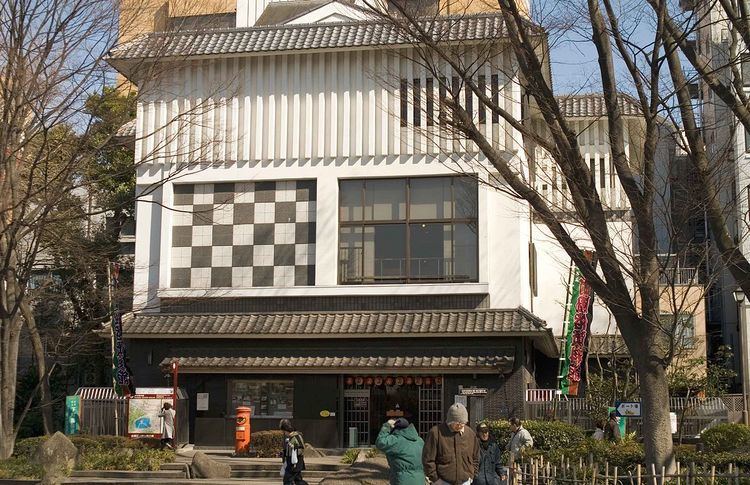Established 1980 | Phone +81 3-3823-7451 Public transit access Ueno Station | |
 | ||
Hours Open today · 9:30AM–4:30PMSunday9:30AM–4:30PMMondayClosedTuesday9:30AM–4:30PMWednesday9:30AM–4:30PMThursday9:30AM–4:30PMFriday9:30AM–4:30PMSaturday9:30AM–4:30PMSuggest an edit Similar Shinobazu Pond, Kaiinseitoshokan Fuzoku Museum, Asakura Museum of Sculpture, Ueno Station, National Museum of Western Art | ||
Taito ku shitamachi museum in ueno park and asakusa
The Shitamachi Museum (下町風俗資料館, Shitamachi Fūzoku Shiryokan) is a museum in Ueno, Taito, Tokyo, Japan. Located on the shores of Shinobazu Pond within Ueno Park, it's dedicated to the traditional culture of Tokyo's Shitamachi.
Contents
- Taito ku shitamachi museum in ueno park and asakusa
- Ani at shitamachi museum pt 1
- Historical background
- First floor
- Second floor
- References
Ani at shitamachi museum pt 1
Historical background
Shitamachi, term translatable as Low City, is the unofficial name given to the Tokyo flatlands, that is the area of Tokyo going from Taitō to Chiyoda and Chuō. The Shitamachi got its name from the fact that it's the physically low part of the city next to, and particularly east of, the Sumida River. Although not necessarily poor, it was inhabited by Edo's lower classes, including craftsmen, fishermen, sailors and merchants. The area produced most of what was original in Edo's culture and was the entertainment and shopping center of the capital. What remains of the old Shitamachi can nowadays be found in and around Tokyo's Taito, for example in Asakusa. The Shitamachi Museum is dedicated to explaining this area and its distinctive culture through original artifacts.
First floor
To the right of the entrance there's the life-size replica of a merchant's house, where geta (Japanese-style wooden clogs) are made and sold. In front of the shop are parked a rickshaw and a hand-pulled cart from old Edo.
To the left stands the replica of a small tenement house shared by two families, each owning a shop. On one side are supposed to live a mother and her daughter, who sell cheap sweets in the small shop adjacent their living quarters. On the other lives a coppersmith who both works and sells his wares at home. The well and the washing board next to the house are original items used in Edo times in the Shitamachi. All objects exhibited were donated by the public and were actually used by the original owners during the Taishō period (1912–1926).
Second floor
The second floor consists of a more varied collection of exhibits. There are toys, dolls, photos, kitchen utensils, board games, card games, plus exhibits related to festivals and other events. There's even the entrance of a public bath (a sentō) donated by the original owner.
